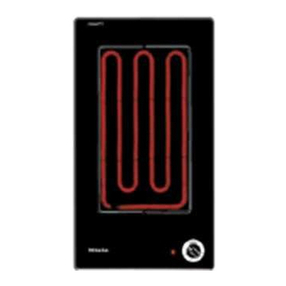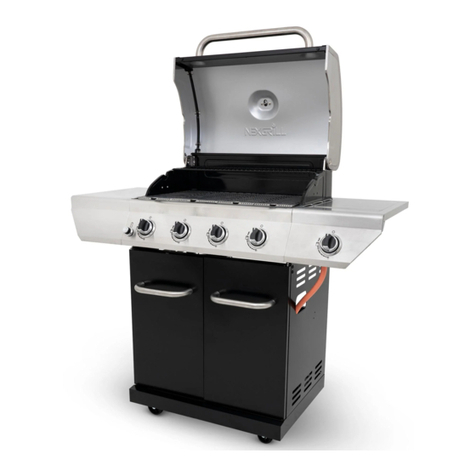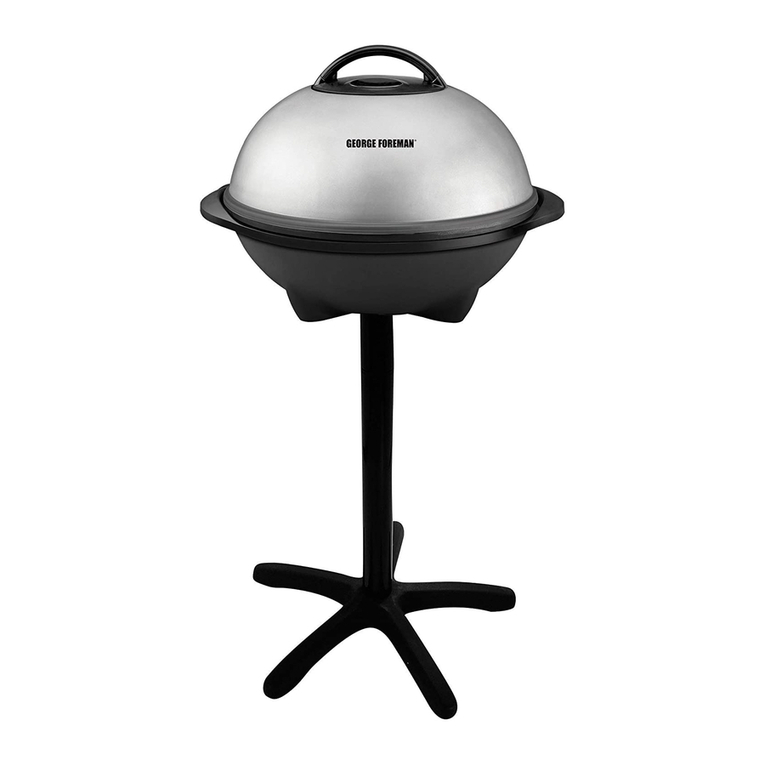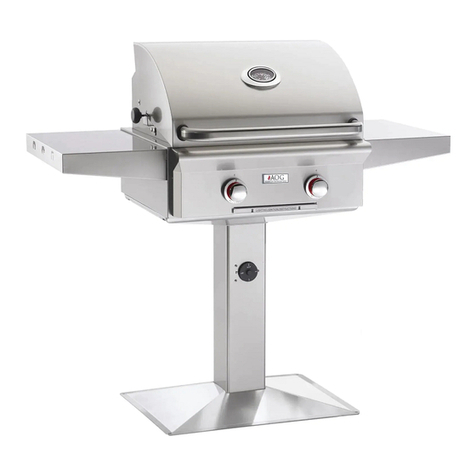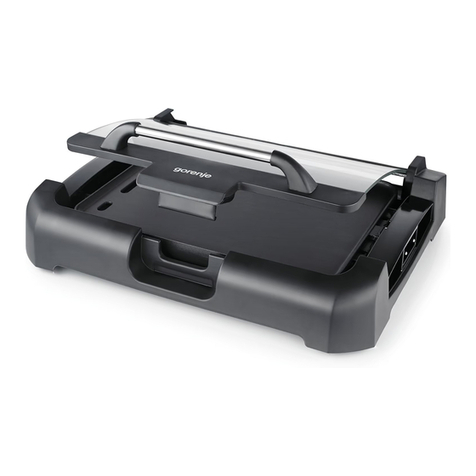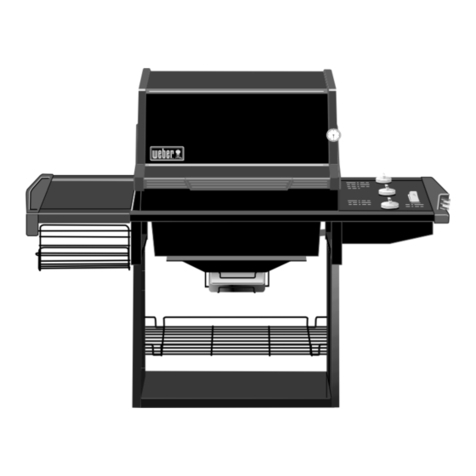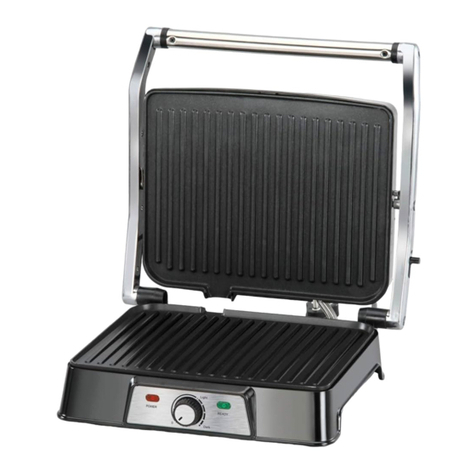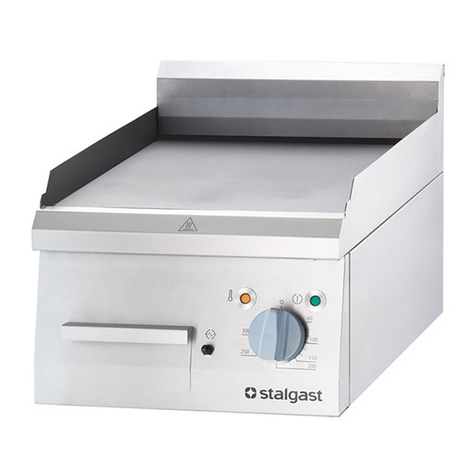
GENERAL SAFTY INFORMATION continued
LP-Gas Supply System
A 20lbs tank of approximately 1/4 inches in diameter by 18-1/4
inches high is the maximum size LP gas tank to use.
This safety feature prevents the tank from being overfilled, which
can cause malfunction of the LP gas tank, regulator and/or grill.
The LP gas supply cylinder to be used must be constructed and
marked in accordance with the specifications for LP –Gas
cylinder of the U.S. Department of Transportation (DOT) or the
National Standard of Canada ,CAN/CSA –B339, Cylinders,
Spheres and Tubes for Transportation of Dangerous Goods and
Commission .
The LP gas tank must have a shutoff valve terminating in an LP
valve outlet that is compatible with a Type 1. LP gas supply
cylinder must have a shut off valve terminating in a valve outlet
specified for connection type QCC1 in the standard for
compressed gas cylinder valve outlet and inlet connection
ANSI/CGA-V-1 as applicable. LP gas supply cylinder must be
fitted with an Overfill Protection Device (O.P.D) The LP gas tank
must also have a safety relief device that has a direct connection
with the vapor space of the tank.
The tank supply system must be arranged for vapor withdraws.
The LP gas tank used must have a collar to protect the tank
valve
Place dust cap on cylinder valve outlet whenever the cylinder is
not in use. Only install the type of dust can on the cylinder valve
out that is provided wit the cylinder valve. Other types of cap or
plugs may result in leakage of propane
Never connect an unregulated LP gas tank to your gas grill.
This outdoor cooking gas appliance is equipped with a high
capacity hose/regulator assembly for connection to a standard
20lb. Liquid propane cylinder.
Have your LP gas tank filled by a reputable propane gas
dealer and visually inspected and re-qualified at each filling.
Do not store a spare LP gas cylinder under or near this
appliance.
Never fill the cylinder beyond 80 percent full .
If the information not followed exactly, a fire resulting in
death or serious injury could occur.
Always keep LP gas tanks in an upright position.
Do not store or use gasoline or other flammable vapors and
liquids in the vicinity of this or any other appliance.
Storage of an outdoor cooking gas appliance indoors is
permissible only if the cylinder is disconnected and removed from
the outdoor cooking gas appliance..
Place dust cap on cylinder valve outlet whenever the cylinder is
not in use. Only install the type of dust cap on the cylinder valve
outlet that is provided with the cylinder valve. Other types of caps
or plugs may result in leakage of propane.
This outdoor working gas appliance is not intended to be
installed in or on boats, or recreational vehicle.
When your gas grill is not in use the gas must be turned off at
LP gas tank.
•The gas must be turned off at the supply cylinder when the
outdoor cooking gas appliance is not in use.
•LP gas tank must be stored outdoors is a well-ventilated area
and out of reach of children. Disconnected LP gas tanks must not
be stored in a building. Garage or any other enclosed area.
PROPER PLACEMENT AND CLEARANCE
OF GRILL
•Never use your gas grill in a garage, porch, shed,
breezeway or any other enclosed area. Your gas grill
is to be used outdoors only.
•Do Not install this unit into combustible enclosures.
•Minimum clearance from sides and back of unit to
combustible construction, 24 inches (61cm) from
sides and 24 inches (61cm) from back.
•DO NOT uses this appliance under overhead
combustible surfaces. This outdoors cooking gas
appliance is not intend to be install in or on
recreational vehicles and/or boats.
•Do Not obstruct the flow of ventilation air around the
gas grill housing. Only use the regulator and the hose
assembly supplied with your gas grill. Replacement
regulators and hose assemblies must be those
specified in this manual.
•The regulator and hose assembly must be inspected
before each use of the grill and after every LP tank
change. If there is excessive abrasion or wear or if
the hose is cut, it must be replaced prior to the grill
being put into operation. The replacement hose
assembly shall be that specified by the manufacturer.
•Pressure regulator and hose assembly supplied with
the outdoor cooking gas appliance must be used.
Never substitute other types of regulator. Contact
customer service for manufacturer specified
replacement parts.
•This outdoor cooking gas appliance is equipped with
a pressure regulator comply with the standard for
Pressure Regulating Valves for LP Gas ANSI/ UL
144.
•Do not use briquettes of any kind in the grill.
•The grill is designed for optimum performance
without the use of briquettes. Do not place briquettes
on the radiant as this will block off the area for the
grill burners to vent. Adding briquettes can damage
ignition components and knobs, and void the
warranty.
•Keep the back and side cart free and clear from
debris. Keep any electrical supply cord, or the
rotisserie motor cord away from the heated areas of
the grill.
•Never use the grill in extremely windy conditions. If
located in a consistently windy area (oceanfront,
mountaintop, etc.) a windbreak will be required (see
below). Always adhere to the specified clearance.
•Never use a dented or rusty propane tank.
•Keep any electrical supply cord and the fuel supply
hose away from any heated surface
•While lighting, keep your face and hands as far
away from the grill as possible.
•Burner adjustment should only be performed after
the burner have cooled.
3
Section One





